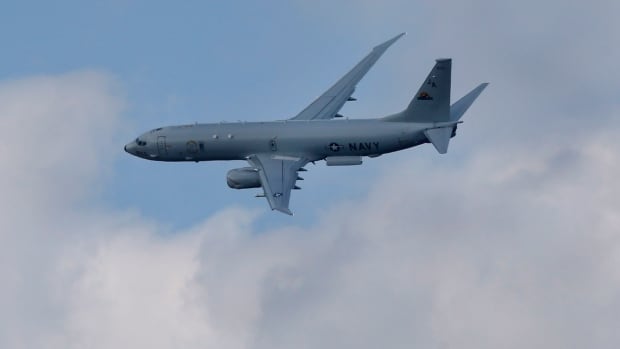
The federal government has finalized a deal with the U.S. to buy up to 16 military surveillance planes at an estimated cost of $10.4 billion.
Several cabinet ministers announced the sole-source deal on Thursday — the same day the offer to buy the Boeing P-8A Poseidon was set to expire.
A senior government official said the government felt it had to enter into an agreement now to avoid a higher price tag later.
The multi-mission aircraft is equipped with anti-submarine torpedoes and missiles.
Defence Minister Bill Blair said the “P-8A is the only design that is [a] currently available, proven aircraft that meets all the operational requirements” of the Royal Canadian Air Force. All of Canada’s Five Eyes allies also use the aircraft, Blair said.
“We believe that it is very much in the public and national interest to acquire the only capability currently available to us,” he said.
The Quebec-based aviation firm Bombardier, several airlines and the premiers of Ontario and Quebec have called on Ottawa to launch an open competition for the contract.
Bombardier said it wanted to pitch a militarized version of one of its planes. Blair called Bombardier’s proposal a “developmental option” the federal government isn’t considering because it wants a proven model that allies are using already.
Senior government officials said launching a competition would have added another three to four years to the timeline.
The first of the Boeing P-8A planes is scheduled for delivery in 2026; all the aircraft are to be delivered by 2027, senior officials said. Canada plans to buy 14 of the planes with the option of buying another two if needed, officials said.
The government is replacing its CP-140 Aurora fleet, used to patrol Canada’s coastline. The fleet is set to retire from service in 2030 after roughly 50 years in service.
“The Aurora is becoming increasingly difficult to support, extensive to sustain, and less suited to operating in today’s threat environment,” said Blair.
Military officials said the Aurora fleet uses an outmoded static sono-buoy system that passively listens for submarines. A senior official said the Boeing P-A planes have technology that actively triangulates to locate more advanced modern submarines.
Military officials said that technology will allow the forces to surveil a much larger volume of water. Since allies use the same planes, Canada can share data with them, the official said.
The government said Boeing has agreed to invest $5.4 billion over 10 years in the Canadian economy. The company also said its investment could create “nearly 3,000 jobs and $358 million annually in economic output to Canada.”